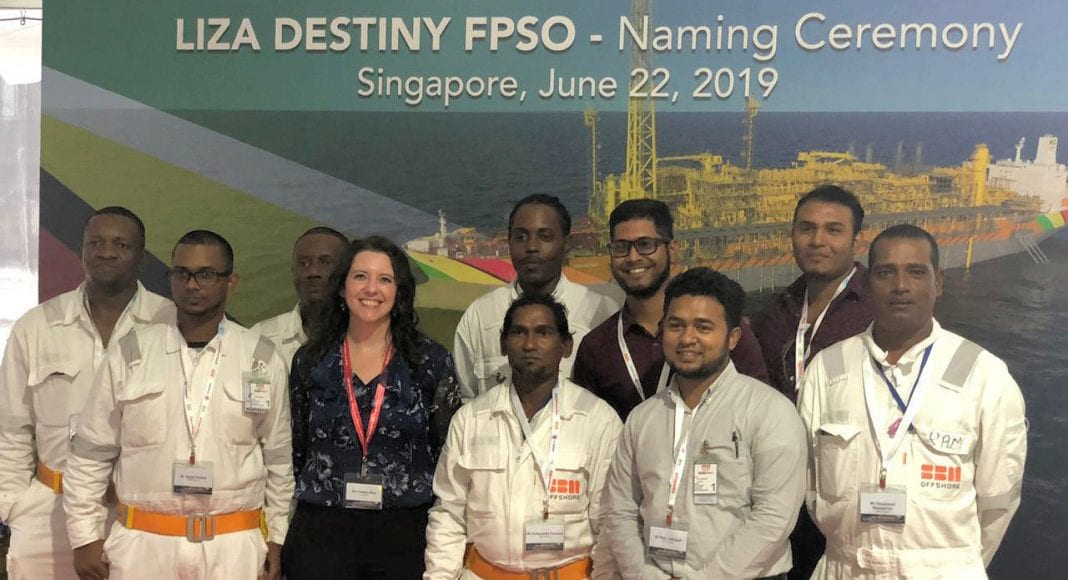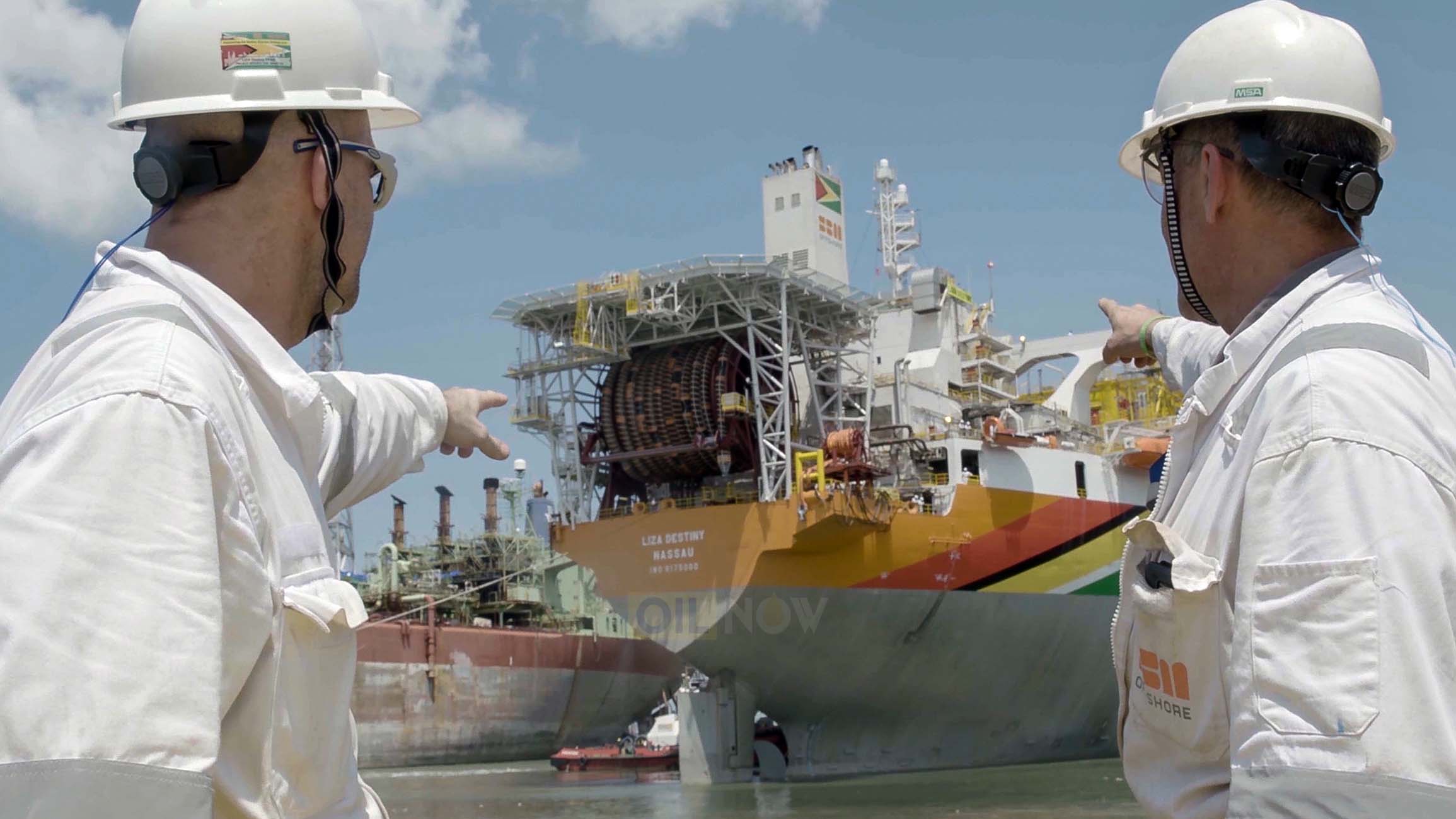Over 1,000 Guyanese worked on projects that culminated with the commissioning of the country’s first floating production storage and offloading (FPSO) vessel on Saturday, June 22, 2019, in Singapore. The vessel then set sail soon after for the South American country where it arrived on August 29, 2019 and began producing oil on December 20 of that year.

The 120,000 bpd Liza Destiny FPSO, built and operated by SBM Offshore, is playing a lead role in converting Guyana’s black gold into hard cash, providing an avenue to significantly transform the small country of 750,000 people.
So far, Guyana has received well over US$400 million from oil exports and royalty.
The Liza Destiny FPSO was converted from the oil tanker, “Tina”, a VLCC (Very Large Crude Carrier) built by Hyundai Heavy Industries in South Korea. ExxonMobil, operator of the Stabroek Block, awarded the contract for its conversion to SBM Offshore in July 2017.
The vessel has an overall oil storage capacity of 1.6 million barrels. During normal operations, there are around 80 persons living and working onboard the vessel.
OilNOW reported in July that the FPSO had gone over 660 days with no recordable incident. “When we say a recordable incident, it would mean anything more than a first aid,” said Mike Ryan, Production Manager at ExxonMobil Guyana. “So, we capture every single incident. So, if someone nips the top of their finger, we record that. That’s a first aid. Anything beyond that like say a stitch or something that requires medical treatment, or an antibiotic or something of that nature is called a recordable.”
Since 2015 Exxon has made 22 discoveries at the Stabroek Block, amounting to more than 9 billion barrels of oil equivalent resources. The U.S. oil major has said around 50 percent of these resources can be developed by 6 FPSOs and an additional 4 units would be needed to produce the remaining hydrocarbons.



